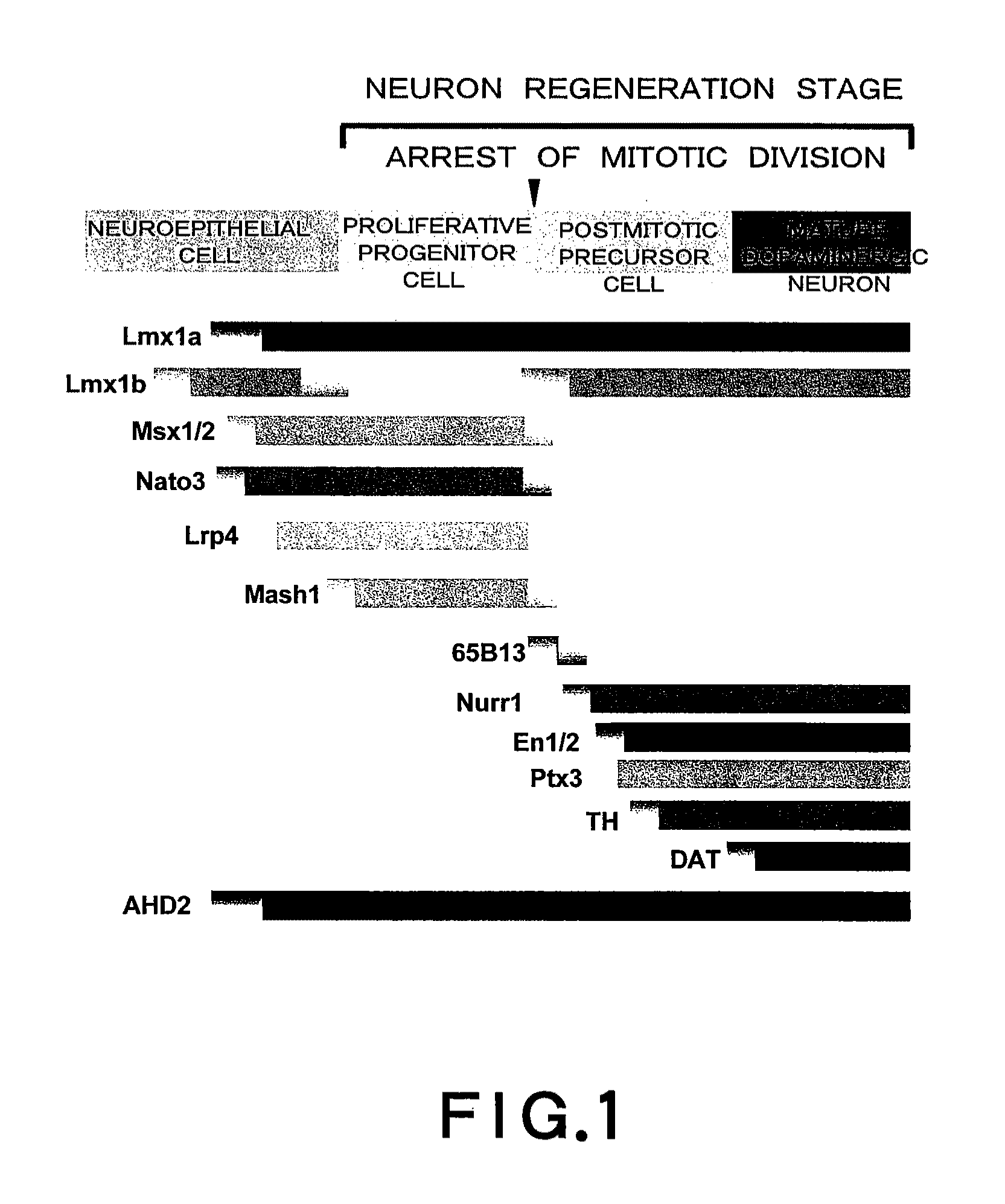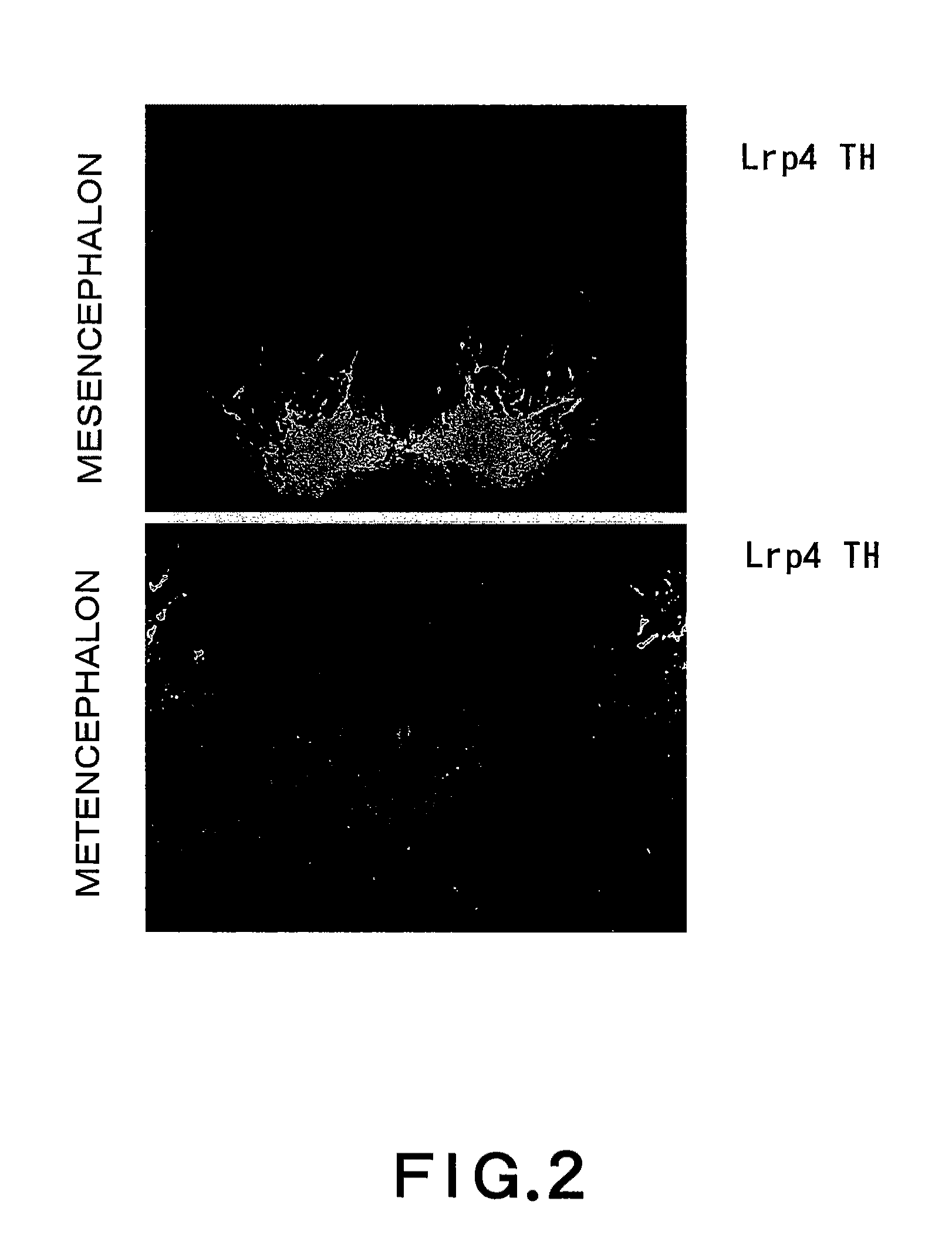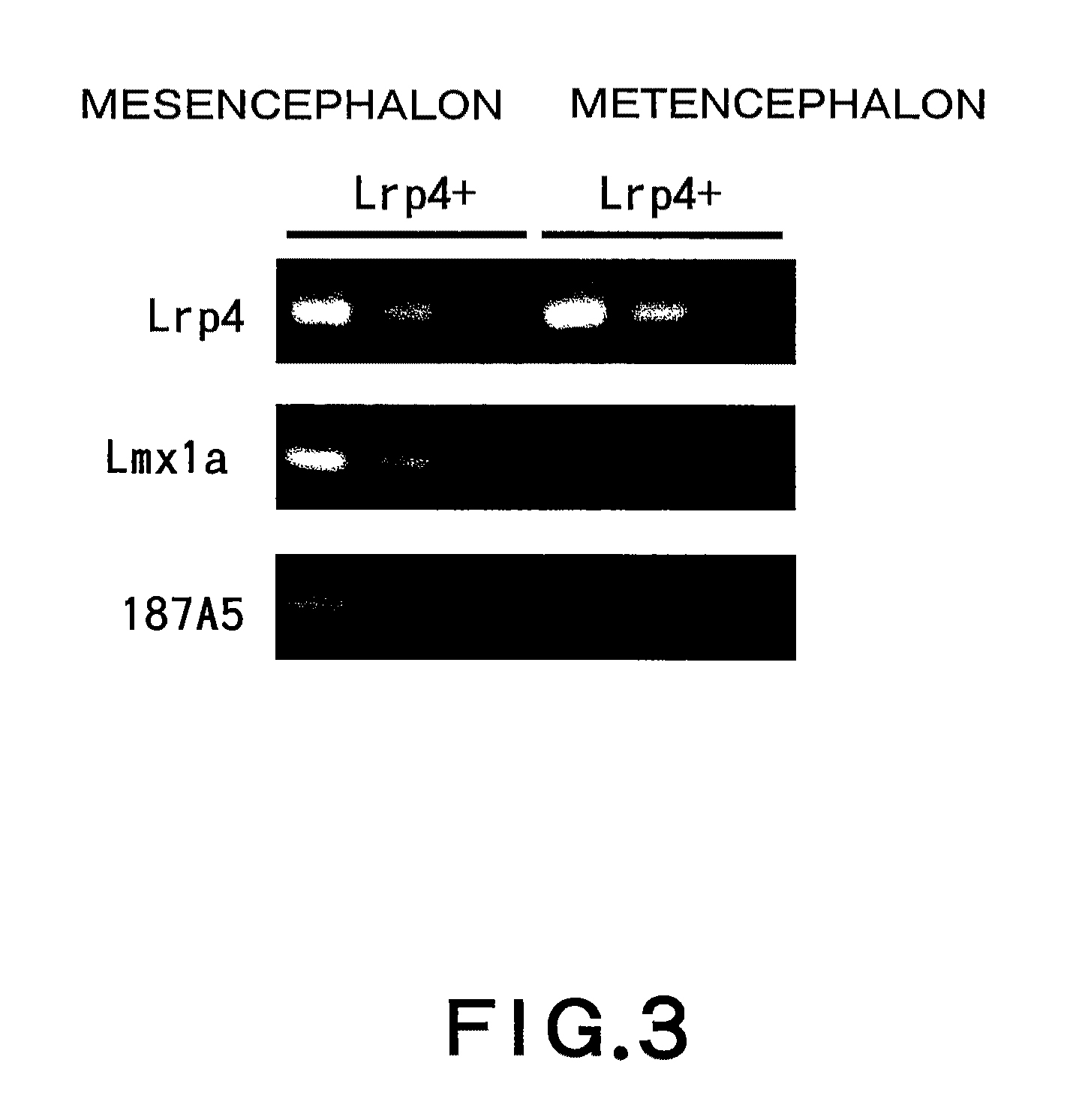Dopaminergic neuron progenitor cell marker 187A5
a technology of dopaminergic neurons and progenitor cells, applied in the field of 187a5 gene, can solve the problems of poor effect, progenitor cells can differentiate into non-uniform cell populations, and none of these contain only dopaminergic neurons or cells, and achieve the effect of promoting the practical application of regenerative medicin
- Summary
- Abstract
- Description
- Claims
- Application Information
AI Technical Summary
Benefits of technology
Problems solved by technology
Method used
Image
Examples
example 1
Isolation and Sequence Analysis of Dopaminergic Neuron Progenitor Cell-Selective Gene
[0303]An Lrp4 gene has been identified as a cell surface marker for separating dopaminergic neuron proliferative progenitor cells (WO 2004 / 065599). By using an anti-Lrp4 antibody, it becomes possible to separate dopaminergic neuron proliferative progenitor cells derived from ES cells. Thus, hereinafter, the isolation and sequence analysis of a gene selective for dopaminergic neuron proliferative progenitor cells will be described.
(1) Isolation of Lrp4-Positive Cell
[0304]First, the mesencephalon and metencephalon ventral regions of a 13.5-day rat embryo were dispersed by using the accumax (MS Techno Systems), and then, without being subjected to fixation and permeabilization treatments, the cells were stained for 30 minutes at 4° C. by using an anti-Lrp4 monoclonal antibody (obtained from hybridomas (Deposition No. FERM BP-10315 and No. FERM BP-10316), diluted to 1 / 10, 1% fetal bovine serum (JRH), 5%...
example 2
Expression Analysis by In Situ Hybridization of 187A5 Gene
[0334]In order to investigate the expression pattern of the 187A5 gene in detail in the cells of dopaminergic neuron lineage, expression analysis of mRNAs of 187A5 and Lrp4 was performed by in situ hybridization according to the following protocol.
[0335]First, a DIG-probe was produced by the following method.
[0336]From a 12.5-day mouse (obtained from SLC) embryo, the mesencephalon metencephalon region was cut out. The total RNA was prepared by using the RNeasy mini kit (Qiagen), and double-strand cDNA was synthesized by using the cDNA synthesis kit (TAKARA). Next, by using the synthesized cDNA as a template, cDNAs of 187A5 and Lrp4 were amplified in the following reaction system.
[0337]
10xExTaq5μl2.5 mM dNTP4μlExTaq0.25μl100 μM primer0.5μl for eachcDNA1μlDMSO1.5μlDistilled water37.25μl
[0338]The amplification was carried out under the conditions that incubation was performed for 5 minutes at 94° C., then reactions for 30 second...
example 3
Expression of 187A5 Gene in Dopaminergic Neurons Induced to Differentiate from ES Cells
[0347]Whether or not the 187A5 gene is expressed when ES cells are induced to differentiate into dopaminergic neurons in vitro was studied.
[0348]First, according to the SDIA method (Kawasaki et al. Neuron. 2000 October; 28 (1): 31-40), ES cells (mouse-derived CCE strain provided from Mr. Nishikawa in Riken CDB, Kawasaki et al. Neuron. 2000 28 (1): 31-40.) were induced to differentiate into dopaminergic neurons. Lrp4-positive and Lrp4-negative cells were separated from the cells in the sixth day after the induction (Example 5 of WO 2004 / 065599), and the total RNA was prepared from the cells immediately after the separation. By using this total RNA as a template, cDNA was synthesized and amplified.
[0349]Moreover, according to the 5-stage method (Lee et al. (2000) Nat. Biotech. 18: 675-679, mouse dopaminergic neuron differentiation kit (R & D Systems)), ES cells (CCE) were induced to differentiate in...
PUM
| Property | Measurement | Unit |
|---|---|---|
| temperature | aaaaa | aaaaa |
| temperature | aaaaa | aaaaa |
| temperature | aaaaa | aaaaa |
Abstract
Description
Claims
Application Information
 Login to View More
Login to View More - R&D
- Intellectual Property
- Life Sciences
- Materials
- Tech Scout
- Unparalleled Data Quality
- Higher Quality Content
- 60% Fewer Hallucinations
Browse by: Latest US Patents, China's latest patents, Technical Efficacy Thesaurus, Application Domain, Technology Topic, Popular Technical Reports.
© 2025 PatSnap. All rights reserved.Legal|Privacy policy|Modern Slavery Act Transparency Statement|Sitemap|About US| Contact US: help@patsnap.com



